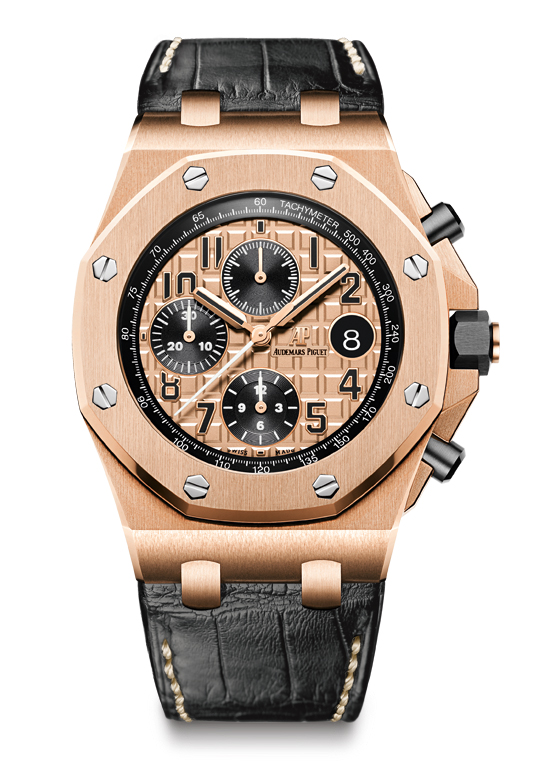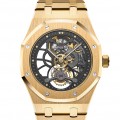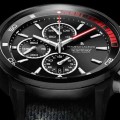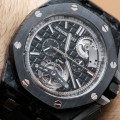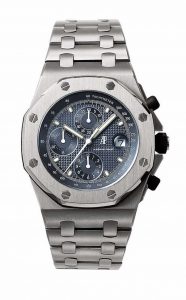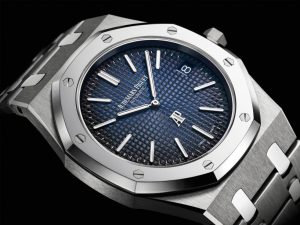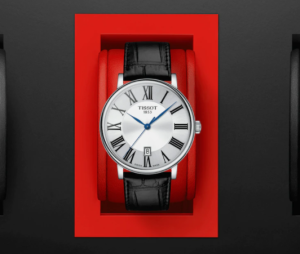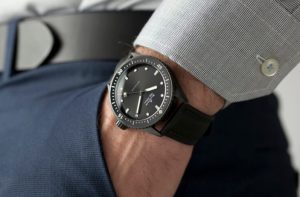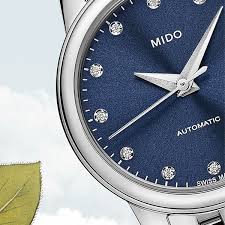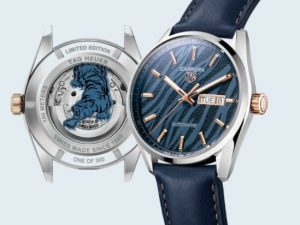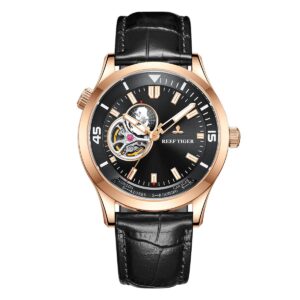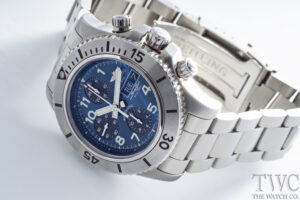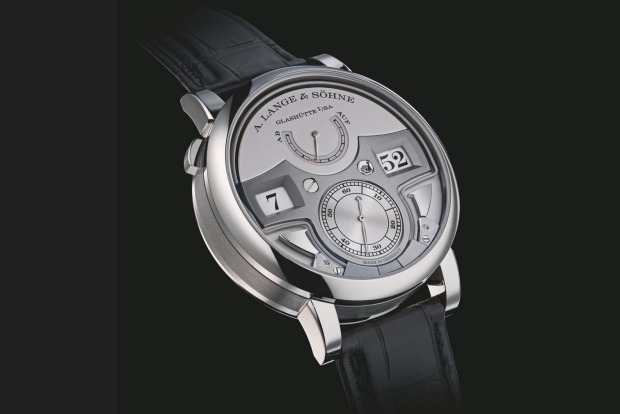
You don’t buy a Swiss watch to tell the time, one of the industry’s leading makers says.
“We do not sell time. If you want the time you have a phone or a smartwatch,” says Antonio Seward, of pre-eminent Swiss watchmaker Audemars Piguet.
The company’s general manager of South-East Asia concedes the ubiquitous smartphone with its internet-connected clock has become the primary time-teller even for ardent watch fans,although his company’s timepieces are engineered to display time with great reliability.
“We sell an experience, we sell a way of doing things, a name, a beauty, design, techniques. So it’s our whole package about authenticity, which goes way beyond functionalities,” he says.
“Of course, you can tell the time as well, but you don’t buy an Audemars just as a timekeeper.”
We believe there is sufficient demand for a brand like ours with its characteristics.
Antonio Seward
Given it will cost a minimum of $24,000 to purchase Audemars Piguet’s entry-level Royal Oak model in stainless steel, the admission is startling.
While a financial downturn and a decline in overall sales has hit the Swiss watchmaking industry hard, Seward maintains his company is largely unaffected.
A clampdown in discretionary spending may be evident, yet the handful of Swiss makers whose ranges begin in the tens of thousands of dollars tend to suffer.
And the laws of supply and demand mean AP won’t be cutting prices or following fellow Swiss maker Girard-Perregaux in creating more affordable entry-level models.
Girard-Perregaux released its 1966 model in steel as a new entry price point to its range.
“Do we want to be more affordable? No,” Seward says. “Our production is stable at 40,000 watches per year. We do not want to produce more, we can’t produce more, our production is to full capacity.
“We believe there is sufficient demand for a brand like ours with its characteristics, and we’re not going to change something which works.
“We have to do sales, for sure, but it’s not our over-riding, top-objective priority. Therefore we do not change the way we do things to access a wider market.
The shape of the groundbreaking Royal Oak model was drawn from the portholes of the British battleship of the same name.
The shape of the groundbreaking Royal Oak model was drawn from the portholes of the British battleship of the same name.
“We want to continue to position Audemars as one of the top five brands in horology terms, in terms of history, complications, contributions to the field and price point.”
The mainstay of the AP range is the Royal Oak, a model it created in 1972. At the time it was the first luxury sports watch in stainless steel, and the first to transcend the conventional design ethic of a classic round case with a traditional leather strap.
Naval gazing
The design and the name both hark back to the British Royal Navy, with the distinctive case shape modelled on a porthole on the warship HMS Royal Oak.
As carmaker Porsche does with its seminal 911 model, AP has evolved and improved the Royal Oak over several decades, and like Porsche the modern-day iteration remains identifiably related to the original. A slew of modern-day imitators have proven the timeless appeal of AP’s core model.
“That notion of daring, of proposing contemporary designs, gives us a younger customer base, people who want luxury traditional Swiss haute horology knowhow but want something more modern than the classical round case,” Seward says.
“(Royal Oak is) for people who love luxury but don’t necessarily want to put luxury on a pedestal, they want to wear it, want to use it, want to live it.
“That really differentiates us from our cousins, who are more oriented towards classical, traditional timepieces, we are more open in terms of design.”
A matter of definition
With such a dominant model anchoring the AP range, is there a risk it defines the brand too narrowly? “There are some who are concerned about it and say yes, we need some strong collections to counter-balance the Royal Oak,” Seward says. “Personally it’s not a main concern because I think the Royal Oak has enough versatility within its collection to appeal to different tastes.
“What characterises AP is an approach to design, an approach to complications, to materials, not to be afraid to try new things. As long as people think about Audemars Piguet in those terms, I don’t think we are in danger of being over-Royal Oaked.”
The smart money
There is also no danger from rising sales of smart watches at the super-luxury end of the timepiece market, he maintains.
Reflecting on comments late last year by Audemars Piguet CEO Francois-Henry Bennahmias that smart watches are the “fast food” of the watch industry, Seward says recent attempts by McDonald’s to “fancy up” its burgers would never send top restaurants out of business.
“The bottom line is that fast food remains fast food and three-star Michelin remains three-star Michelin,” he says. “So I think (as a super-luxury watchmaker) we’re OK.”
